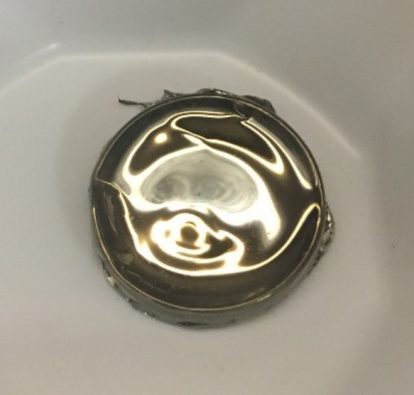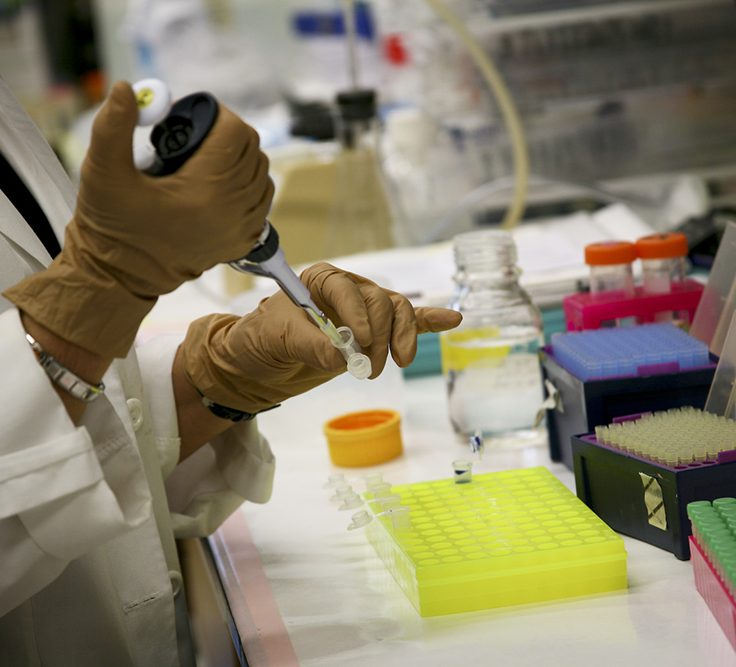A Silvery Film is Opening New Possibilities for Flexible Electronics
UF researchers use catalyst to rapidly synthesize a semiconducting polymer
Researchers from University of Florida chemistry professor Adam S. Veige’s lab were confident that they had created a new version of one of the most important semiconducting polymers. The reviewers of their latest paper, meanwhile, weren’t yet convinced.

They wanted direct, visual evidence that the silvery film the lab had synthesized was in fact cyclic polyacetylene — a counterpart to linear polyacetylene, whose discovery in 1958 launched the field of flexible electronics and later earned Nobel Prizes for three scientists. A cyclic version of the polymer would have a ring-like structure and drastically different properties.
With the possibility of the paper’s rejection looming, then-graduate student Zhihui Miao managed to get what they needed at the last minute. After brushing the polymer onto a surface, he used atomic force microscopy (AFM) to capture the first image showing the distinctive ring structure.
“I couldn’t believe my eyes when it actually popped up,” said Miao, who graduated with his PhD in spring 2021. “We had been looking for almost five years. I sent the image to Dr. Veige, and he was like, ‘That’s it — that’s the missing piece!’”
Their synthesis of cyclic polyacetylene, published in Nature Chemistry in June, presents exciting possibilities for flexible electronic devices such as wired clothing, display screens or even artificial skin that can receive electrical impulses. Veige, PhD, collaborated with fellow UF chemistry professor Brent S. Sumerlin, PhD, on the research, which was funded by the National Science Foundation.
A semiconductor on its own, cyclic polyacetylene becomes highly conductive when doped with iodine — much like the linear version. But using a tungsten-based catalyst that Veige and his collaborators discovered, researchers can synthesize the cyclic polymer much more quickly.
“Just making it so efficiently is a huge advantage,” Veige said. “It opens up a whole new world of testing its bulk-scale properties.”

Veige and his collaborators have been looking to conclusively prove that they had synthesized cyclic polyacetylene since 2016, when Stella A. Gonsales, then a PhD student in Veige’s lab, made the initial discovery.
When Miao, who is now a senior research chemist in 3M’s corporate research material lab polymer science group, captured the last-minute image, it left no doubt.
“This is what we needed to publish after all these years,” Veige said.
The researchers are still learning about the advantages of the polymer’s cyclic nature, but they are hopeful its impact will hold its own against the imposing standard set by its linear counterpart.
Looking ahead, Veige has co-founded the start-up company Round-CAT to commercialize the new technology, and the researchers plan to use the catalyst to efficiently synthesize other commercially relevant cyclic polymers.


